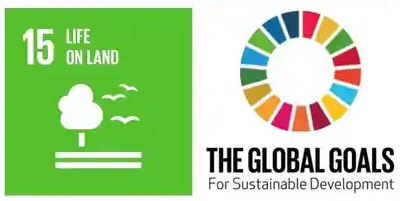1: Cultivation Zone (800 m — 1800 m)
The cultivation zone is the first zone of the mountain that you can pass on as you drive to Kilimanjaro’s gates.
This cultivation zone receives enough rainfall. Coupled with many rivers formed by merging streams of glacier run-off on the mountain.
Villagers take part in the cultivation of Bananas, Coffee, Maize, avocados, and vegetables. In fact, some of Africa’s best coffee comes from the foothills of Mount Kilimanjaro.
They use Bananas for the production of banana wine and local beers. This is one of the most preferred wines and food by the Chagga people.
2: Rainforest Zone (1800 m — 2800 m)
The forest zone begins at the park gates. Climbers spend their first day walking in the forest. This zone supports life for plants, birds, and animals.
Because of the forest, this area receives enough amount of rainfall. compared to other climatic zones of this mountain.
You should expect to see animals and birds. The common animals in this area are Black and white colobus monkeys and Olive Baboons. But also birds of different species available are Hartlaub’s turaco.
This zone is covered by tall trees including old man bared. Climbing through the cloud towards the upper limits of the forest. This makes some very beautiful atmospheric photography.
Forest is usually mild, the real hiking adventure begins from this zone. If you climb during the rainy season, you better know that the trail can get muddy and slippery. Your gaiters and walking poles are very important for climbing.
3: Heather and Moorland Zone (2800 m — 4000 m)
From this zone is when you start to experience your presence on the mountain. The weather on the mountain is always unpredictable.
Temperature above the forest in the daytime can be above 40oC and during the night it can drop below 0oC.
With increased winds and decreased rainfall. The giant heathers, wild grasses, and a rocky trail replace the trees. Some heathers can grow to over 10 m in height, dwarfing a person.
But as you climb higher the flora reduces in size and grasses become much more predominant.
Large fields of wildflowers cover sections of the mountain. And you will often see clouds floating at your eye level. Expect vivid blue skies and sun at the upper end of this zone, with little clouds to protect you from the sun’s rays.
It is important to take your sunglasses and hat. But also remember to apply sunscreens to keep your skin safe from this zone.
4: Alpine Desert (4000 m — 5000 m)
The alpine desert zone receives little rainfall, less than 200 mm a year. The plant life that exists at this altitude is terrible. It has to put up with burning sunshine and sub-zero temperatures.
This zone also shows off its violent past with fields of volcanic rock of all shapes and sizes. You are now close enough to the cone of Kibo.
You will see the vast glaciers that cling to the deep gorges on the slopes and the breaches in the crater rim. This is where molten lava punched through during ancient eruptions.
Also is one of the most dramatic landscapes you will ever witness. At this altitude, the mercury dips well below freezing, and you may wake up to frost on the ground in the morning.
Water is scarce, and the zone’s thin soils keep little of what materializes. Plants that withstand such harsh conditions are tussock grasses and moss balls.
5: Summit or Arctic Zone (5000 m — 5895 m)
The Summit zone is the last zone of Kilimanjaro, the oxygen level at the top is roughly half of that found at sea level. The thin atmosphere offers little protection against the fierce rays of the sun.
The lower section of this zone is made up of a screen that is quite difficult to climb. Hence the summit bid is made at night when the evening dew has settled and frozen. Knitting the scree together and making it more stable underfoot.
As you climb, ice will begin to appear in patches and soon in large fields. As you approach the lower reaches of the summit glaciers. On rare occasions when it does precipitate. The porous, volcanic rock absorbs the moisture in an instant.
Hikers from Marangu and Rongai routes meet up with the hikers from other routes. Hikers from Machame, Lemosho, and Umbwe routes meet at Stella point.
They all follow the same trail to Uhuru Peak! It is 1 hour or less to reach the top of Africa. This is where you can see the yellow sign shining at the top telling you that you are now reaching the top of Africa.
Most of the time the weather in this zone is crazy, but you will feel much better when you go down to the low altitude




